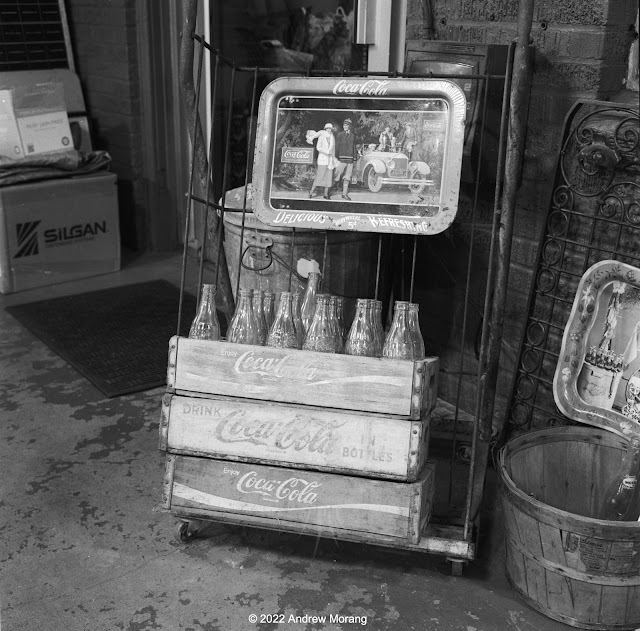 |
| 1938 Coca-Cola bottling plant, 2133 Washington Street, Vicksburg |
Dear Readers, you likely know that I like old industrial sites with machinery, pipes, tubes, tanks, and other remnants of industry. The basement of the former Coca Cola bottling plant at 2133 Washington Street in Vicksburg, Mississippi, fits this criteria. This was the last bottling plant that the Biedenharn family built in Vicksburg. This sturdy 1938 brick industrial building stands at the corner of Washington Street and Bowman Street.
Note, this is not the Biedenharn Coca-Cola Museum in downtown Vicksburg, where Coca-Cola was first bottled in 1894 (back when it still had coca in the secret ingredients). The family also operated another plant on Grove Street, later the site of the Vicksburg Steam Laundry. I have negatives of this building to scan one day (you know that fairy tale - one day....).
Here are some photographs of the basement from February of 2022. Mr. Anthony Cripps, a carpenter and cabinet maker, was renting the basement and generously let me photograph the old fittings and machines. He had run new fluorescent lights to illuminate the gloomy space. Most of the frames below had side-lighting from the dusty windows. Enjoy the shapes, patterns, and forms - industrial art.
 |
| Air compressor (50mm ƒ/4 Distagon lens, 1 sec. ƒ/11) |
 |
| Compressor with a beer (80mm Planar-CB, 1 sec. ƒ/11.5) |
 |
| Water-cooling jacket (80mm Planar with Proxar no. 1 close-up diopter) |
 |
| Lubricator, manually cranked? (80mm Planar lens with Proxar no. 1 close-up diopter) |
 |
| Back cap and bolt patters (80mm Planar-CB lens, 1 sec. ƒ/11) |
 |
| GE electoral control box (80mm Planar-CB, ½ sec. ƒ/11) |
 |
| Hot water boiler (1 sec. ƒ/11.5) |
 |
| Fuse panel (4 sec. ƒ/11) |
 |
| Among the hundreds of valves (1 sec. ƒ/5.6) |
 |
| Stairway to upper shop (40 sec. ƒ/8 with minor fill flash on right) |
The stairway was challenging. It was lit with a dim lightbulb above on the ceiling. My incident light meter measured 10 seconds at ƒ/8 on the center of the stairs. I used a 40 sec exposure to accommodate reciprocity of the film. I also added fill flash on the right, but it likely added very little light.
 |
| Long-forgotten icebox (1 sec. ƒ/5.6½) |
I took these photographs with my Hasselblad 501CM camera, most with the 80mm ƒ/2.8 Planar-CB lens, on Kodak Tri-X 400 film. I stabilized the camera on a tripod because of the long exposures. Northeast Photographic in Bath, Maine, developed the film. I scanned it with a Minolta Scan Multi medium format film scanner.
Standby for the attic in the next article.



















































